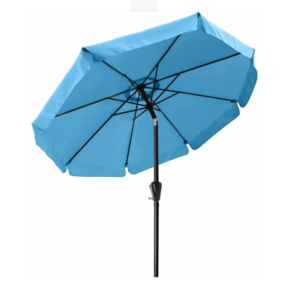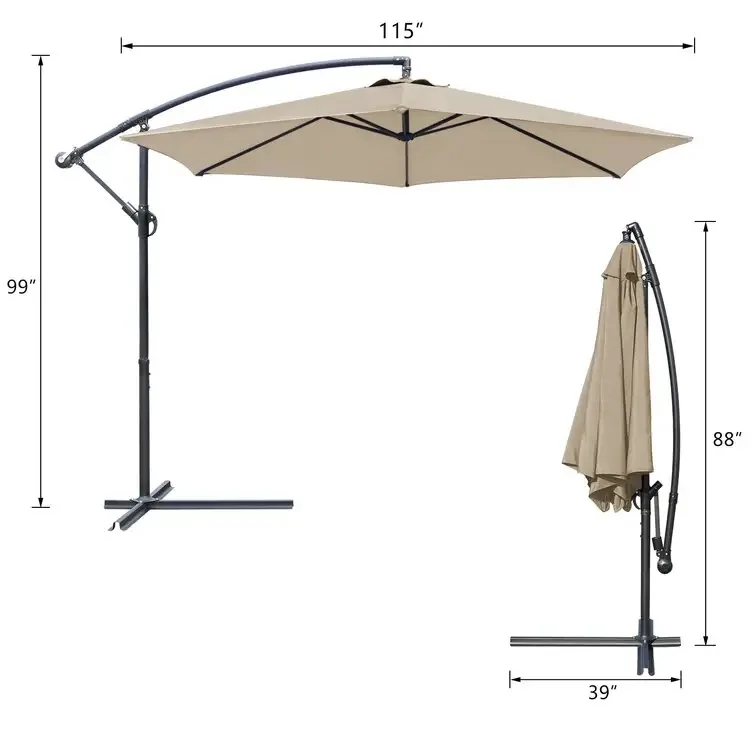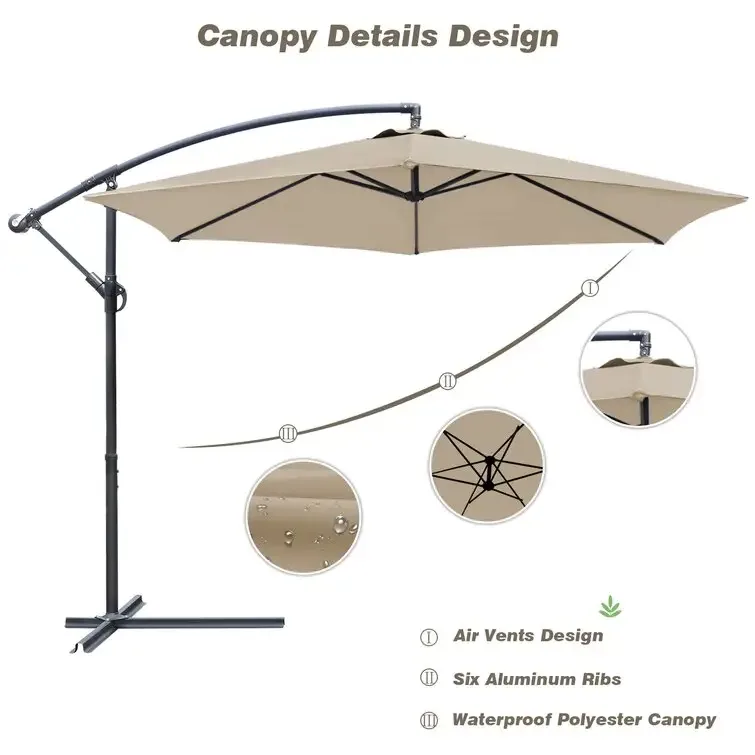
Cantilever umbrellas are a great addition to any outdoor space, but one common issue is that they tend to spin in the wind. Luckily, there are several ways to prevent this, ensuring your umbrella stays stable.
Most cantilever umbrellas come with a locking mechanism at the base or near the rotating joint. Over time, these locks can loosen, causing the umbrella to spin.
| Advantages | Disadvantages |
|---|---|
| Simple and quick fix | May require regular maintenance |
Locking mechanisms are effective for mild winds, but for stronger gusts, additional measures may be needed.
A lightweight base can make your cantilever umbrella more prone to spinning. Adding weight to the base ensures better stability.
| Base Type | Weight | Best Use |
|---|---|---|
| Water-Filled Base | 50–100 lbs | Calm days |
| Sand-Filled Base | 100–150 lbs | Windy days |
| Additional Weights | +50 lbs | High winds |
A properly weighted base is crucial in preventing the umbrella from spinning, especially in windy areas.
If your umbrella is placed on a smooth surface like concrete or tile, the lack of friction can make it easier to spin. Adding a non-slip pad under the base increases friction, which can stabilize the umbrella.
| Pros | Cons |
|---|---|
| Affordable and easy to install | May not be effective in extreme winds |
Non-slip pads are a cost-effective and simple solution to increase stability on slippery surfaces.
If your umbrella is frequently exposed to high winds, relocating it to a more protected area can help. Placing it near walls, under a pergola, or behind trees or tall hedges reduces the amount of wind hitting the umbrella directly.
Sheltered areas minimize the chance of your umbrella spinning but may not always be feasible depending on your outdoor setup.
If none of the above methods work, it might be time to upgrade to a heavier or more secure base. Larger umbrellas need heavier bases to prevent movement.
| Umbrella Size | Recommended Base Weight |
|---|---|
| Up to 9 feet | 50–100 lbs |
| 10–11 feet | 100–150 lbs |
| 12 feet or more | 150–200 lbs |
A larger, more stable base is often the best solution for windy environments, ensuring the umbrella stays put.
To keep a cantilever umbrella from spinning, you need to secure the locking mechanism, increase the weight of the base, use non-slip pads, or relocate the umbrella to a sheltered spot. In high-wind areas, upgrading to a heavier base or opting for a permanent fixing solution can provide long-term stability. Regular maintenance and adjustments will ensure your umbrella stays stable and functional for years to come.